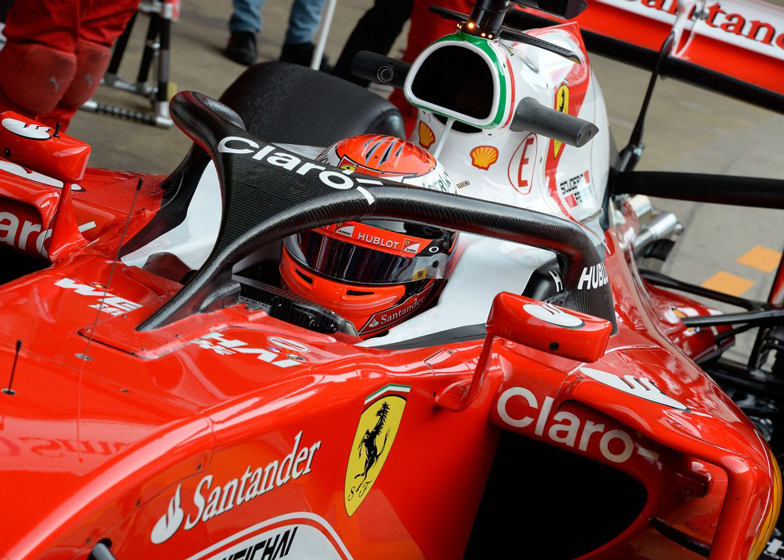Reigning Formula One world champion Lewis Hamilton has described a proposed head-protection device fitted to the front of the racing cars as the "worst-looking" design modification in the sport's history.
The reinforced carbon-fibre Halo hoop is designed to deflect dangerous debris away from the driver's head, without affecting visibility or escape in the event of an emergency.
Despite backing from several drivers and initially suggested by Mercedes-Benz – Hamilton's current team – the British world champion took to Instagram to attack the design for being ugly in a post he has since removed.
"Please no! This is the worst looking mod in Formula One history," wrote Hamilton, alongside a picture of a Ferrari that was testing the device last week. "I appreciate the quest for safety but this is Formula One, and the way it is now is perfectly fine."
The three-pronged device is fixed to the racing vehicle's cockpit via a single, central strut that flares out and sweeps up either side of the driver's head, forming a protective frame.
A hinged locking mechanism behind the driver's head might be added to the final design, meaning the device could be quickly removed for easy access and escape.
Aesthetics is an important aspect of the sport, which attracts huge advertising revenues from around the world. But Formula One's governing body, the FIA, is putting driver safety first after a number of accidents.
Driver Jules Bianchi died in July, nine months after suffering severe head injuries at the 2014 Japanese Grand Prix, when his car span off the track and hit a recovery vehicle. The fatality was the first the sport has suffered in 21 years.
In 2009, Felipe Massa also suffered near-fatal injuries after being hit on the head by a spring that had fallen off a competitor's vehicle. He made a full recovery and still races in the sport.
To help protect drivers, the Halo design is currently being tested and expected to be fitted to vehicles in time for the 2017 season.
"The good news is that the three structures we tested performed as expected or better than expected," FIA safety director Laurent Mekies told AUTO magazine. "On top of that we have received a lot of support from the teams who provided us with all their calculations and design power, which has made this step forward possible."
"We are pushing very hard to integrate it as early as possible," Mekies continued. "The real deadline is the teams' timing to modify their cars accordingly and our capability to assess all the connected issues."
"Design is done very much in advance in Formula One, therefore if we want to make 2017 it needs to be decided in the next few months," he added.
This isn't the first time that Formula One cars have been called out for being ugly.
The bulbous-nosed vehicles produced by manufactures for the 2014 season were heavily criticised, leading Ferrari to release images of a concept racing car that offered an alternative design vision for the sport.
"Our challenge was to create something that was – to put it short – better looking," said Ferrari at the time.

